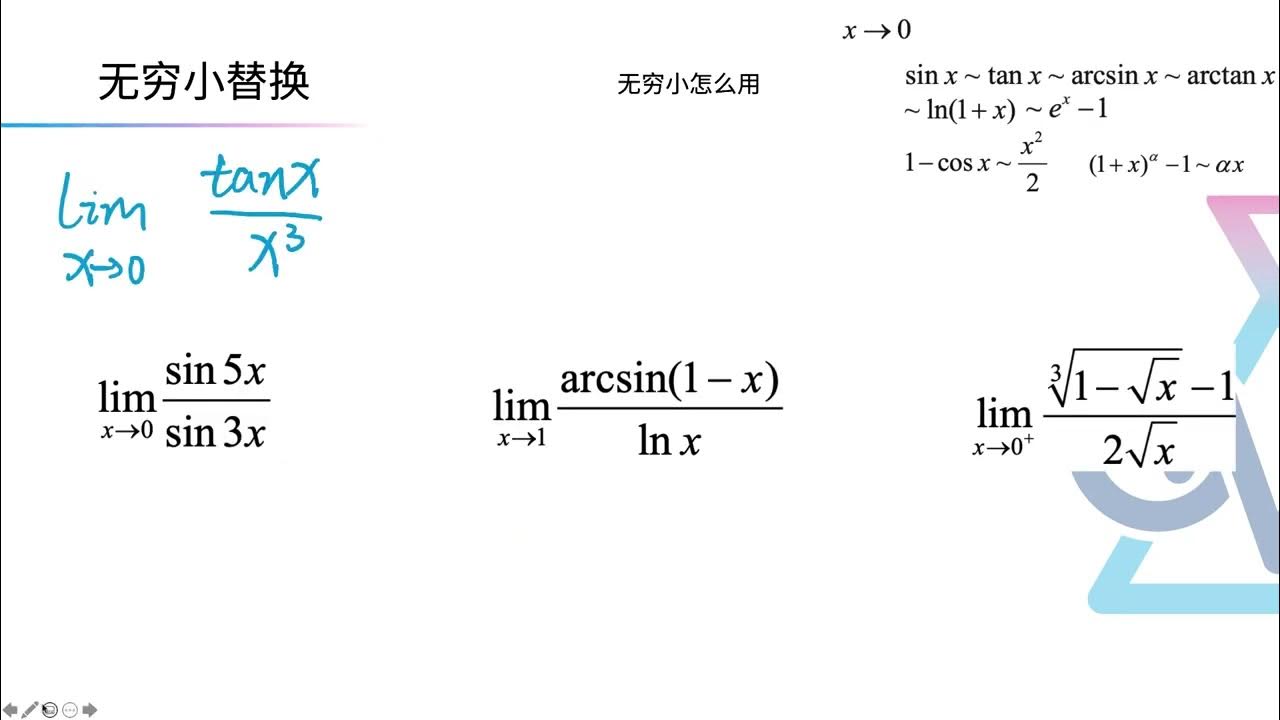The Gaussian Integral
Summary
TLDR本视频讲解了如何计算从负无穷到正无穷的e的负x平方次方的积分。通常,求解定积分需要先找到原函数,但本题的原函数较为复杂,涉及误差函数。视频中通过绘制函数图像,发现其与正态分布曲线相似。通过将积分问题转化为求体积问题,并利用具有径向对称性的空心圆柱体来近似计算体积,最终得出积分结果为根号下π。这个过程展示了高斯积分的概念,它在数学和物理学中非常重要,特别是在处理正态分布时。
Takeaways
- 🤔 计算 e^(-x²) 在从负无穷到正无穷的积分是一个复杂的问题,使用常规的不定积分方法难以解决。
- 📉 e^(-x²) 的图像与正态分布曲线相似,实际上它就是正态分布的曲线。
- 🔢 直接求不定积分会得到一个非初等函数——误差函数(error function),不易处理。
- 🔄 可以通过转换为极坐标,简化积分问题,将 e^(-x²-y²) 转换为一个关于 r 的函数。
- 📏 通过几何方法,积分相当于计算一个 3D 钟形曲线下的体积,这个体积具有辐射对称性。
- 🛠️ 通过分解该体积为无数个半径从零到无穷的同心圆柱体,将体积转化为对每个小圆柱体的积分。
- ✂️ 这些圆柱体的体积可以通过高度(函数值)、周长(2πr)和厚度(dr)的乘积来计算。
- ♾️ 最终积分从 0 到无穷,通过简单的代换(u = r²)可以将积分简化并求出答案。
- ✔️ 最后得到的积分结果是 π,因此原始的积分结果为 √π。
- 📚 这个积分被称为高斯积分(Gaussian integral),在数学和物理中广泛出现,尤其是在正态分布的归一化过程中。
Q & A
视频中提到的积分是什么类型的积分?
-视频中提到的积分是定积分,具体是计算函数e^(-x^2)从负无穷到正无穷的积分。
为什么直接计算不定积分不是解决这个问题的好方法?
-直接计算不定积分不是好方法,因为对于这个函数,不定积分相当复杂,涉及到非初等函数——误差函数,这使得计算过程变得困难。
视频中提到了误差函数,它是什么?
-误差函数是一个非初等函数,它不能简单地用基本的数学运算来描述,通常在数学中用来表示某些积分的解。
视频中提到了正态分布曲线,它与我们要积分的函数有什么关系?
-我们要积分的函数e^(-x^2)的图形实际上就是正态分布曲线,这是高斯分布的一个特例。
视频中提到了将积分问题转化为体积问题,这是如何实现的?
-通过将函数e^(-x^2 - y^2)转化为依赖于R(点到z轴的距离)的形式,并利用具有径向对称性的空心圆柱体来近似计算体积,从而将积分问题转化为体积问题。
视频中提到的'I'代表什么?
-'I'代表的是积分∫e^(-x^2)dx从0到∞的结果,它是我们要求解的原始积分问题的答案。
视频中提到的'I^2'是什么意思?
-'I^2'指的是'I'的平方,也就是积分∫e^(-x^2)dx从0到∞的结果的平方,这与我们要求解的原始积分问题相关。
视频中是如何通过积分来计算体积的?
-通过将体积分解为无限多个无限细的空心圆柱体,然后对每个圆柱体的体积进行积分,最后求和得到总体积。
视频中提到的高斯积分有什么特殊的意义?
-高斯积分在数学和物理学中有广泛的应用,特别是在处理正态分布和其归一化方程时非常重要。
视频中最后得出的积分结果是什么?
-视频中最后得出的积分结果是√π,即∫e^(-x^2)dx从-∞到∞的积分等于√π。
视频中提到的积分方法为什么有效?
-视频中提到的积分方法有效,因为它利用了函数的径向对称性和体积分解的思想,通过将复杂的积分问题转化为更简单的体积计算问题。
Outlines

Этот раздел доступен только подписчикам платных тарифов. Пожалуйста, перейдите на платный тариф для доступа.
Перейти на платный тарифMindmap

Этот раздел доступен только подписчикам платных тарифов. Пожалуйста, перейдите на платный тариф для доступа.
Перейти на платный тарифKeywords

Этот раздел доступен только подписчикам платных тарифов. Пожалуйста, перейдите на платный тариф для доступа.
Перейти на платный тарифHighlights

Этот раздел доступен только подписчикам платных тарифов. Пожалуйста, перейдите на платный тариф для доступа.
Перейти на платный тарифTranscripts

Этот раздел доступен только подписчикам платных тарифов. Пожалуйста, перейдите на платный тариф для доступа.
Перейти на платный тарифПосмотреть больше похожих видео
5.0 / 5 (0 votes)






